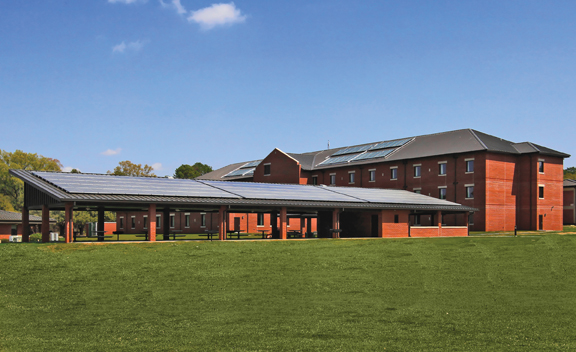NEW YORK, N.Y., July 11, 2016 — Suffolk Construction Company, Inc., one of the largest privately held construction companies in the U.S., has named industry veteran and Suffolk Construction executive Grant Gagnier as its new Chief Operating Officer of the New York Region. Suffolk recently opened an office in Manhattan at One Pennsylvania Plaza.
Gagnier will be responsible for overseeing areas of governance, strategy, operations, non-operations business support, company advocacy and brand expansion in support of Suffolk’s vision and strategies within New York City and its surrounding areas.
Grant Gagnier
Gagnier has more than 25 years of experience in the construction industry. His background in project management and corporate leadership roles at Suffolk, including experience in field operations and the integration of innovation technologies and processes company-wide. Gagnier led the effort to scale the company’s “Build Smart” approach across various regions and offices.
“The New York market is ripe for an innovative, collaborative contractor such as Suffolk,” said Gagnier. “I look forward to strengthening Suffolk’s position in this expanding market and implementing our ‘Build Smart’ approach to deliver a unique and predictable construction experience for clients using state-of-the-art technologies and processes that are revolutionizing our industry.”
Charlie Avolio, Suffolk Construction’s President and General Manager of the New York City region, said, “As Suffolk continues to build momentum in New York, I am confident Grant’s strong leadership, industry knowledge and innovation mindset will help us strengthen our market share and establish us as a major player in the region.”
Gagnier began his career as a carpenter and mason tender and then served as an engineer for Vincent P. Guntlow and Associates. He also held operations and leadership positions at Barr & Barr Builders. Gagnier first joined Suffolk in 2003 and has managed complex projects such as D Street Hotels, Waterside Place and 50 Post Office Square in Boston. In New York City, he is helping to oversee the Suffolk project teams on 222 East 44th Street and Hudson Exchange West. Throughout his tenure at Suffolk, Gagnier has assumed key leadership positions in operations and has been one of the most passionate advocates of Suffolk’s innovation strategy and “build smart” approach, which includes the use of virtual design and construction, Lean principles and state-of-the-art technologies and collaboration tools.
Over the past nine years he has served as an Assistant Coach for Plymouth Youth Hockey and South Plymouth Youth Baseball. He currently sits on the Board of Directors of the Plymouth Boys & Girls Club, where he formerly served as Vice President of the Board. In the past, he has also served as an invested member of the following boards and committees: Associated General Contractors (AGC) Young Contractors Council, AGC Contractor Relations Committee, Union College Alumni Admissions Committee, and Union College Department of Civil Engineering Academic Advisory Committee.
Gagnier graduated with a Bachelor of Science degree in Civil Engineering from Union College, and in 2003 he became a recipient of the Union College Silver Alumni Award.
Suffolk Construction Company
Suffolk Construction is one of the most successful privately held building contractors in the country. With annual revenue of $2.5 billion, Suffolk provides preconstruction, construction management, design-build and general contracting services to clients in the healthcare, science and technology, education, federal government and commercial sectors.
Suffolk is committed to delivering its “build smart” approach to construction management on every project. The company’s project teams provide clients comprehensive planning services, innovative solutions and technologies and proven processes, such as Lean Construction principles and Virtual Design and Construction (VDC), to deliver the most complex building construction projects on schedule and on budget, with minimal risk.
Related Stories
| May 10, 2012
Chapter 6 Energy Codes + Reconstructed Buildings: 2012 and Beyond
Our experts analyze the next generation of energy and green building codes and how they impact reconstruction.
| May 10, 2012
Chapter 5 LEED-EB and Green Globes CIEB: Rating Sustainable Reconstruction
Certification for existing buildings under these two rating programs has overtaken that for new construction.
| May 10, 2012
Chapter 4 Business Case for High-Performance Reconstructed Buildings
Five reconstruction projects in one city make a bottom-line case for reconstruction across the country.
| May 10, 2012
Chapter 3 How Building Technologies Contribute to Reconstruction Advances
Building Teams are employing a wide variety of components and systems in their reconstruction projects.
| May 10, 2012
Chapter 2 Exemplary High-Performance Reconstruction Projects
Several case studies show how to successfully renovate existing structures into high-performance buildings.
| May 9, 2012
Chapter 1 Reconstruction: ‘The 99% Solution’ for Energy Savings in Buildings
As a share of total construction activity reconstruction has been on the rise in the U.S. and Canada in the last few years, which creates a golden opportunity for extensive energy savings.
| May 9, 2012
International green building speaker to keynote Australia’s largest building systems trade show
Green building, sustainability consultant, green building book author Jerry Yudelson will be the keynote speaker at the Air-Conditioning, Refrigeration and Building Systems (ARBS) conference in Melbourne, Australia.
| May 9, 2012
Tishman delivers Revel six weeks early
Revel stands more than 730 feet tall, consists of over 6.3 milliont--sf of space, and is enclosed by 836,762-sf of glass.
| May 9, 2012
Stoddert Elementary School in DC wins first US DOE Green Ribbon School Award
Sustainable materials, operational efficiency, and student engagement create high-performance, healthy environment for life-long learning.
| May 9, 2012
Shepley Bulfinch given IIDA Design award for Woodruff Library?
The design challenges included creating an entry sequence to orient patrons and highlight services; establishing a sense of identity visible from the exterior; and providing a flexible extended-hours access for part of the learning commons.


















